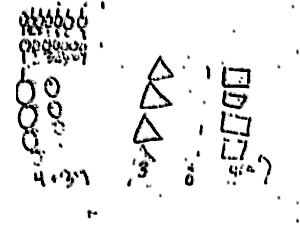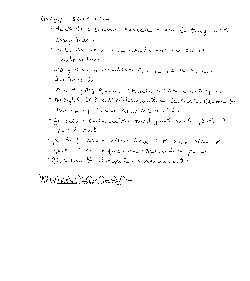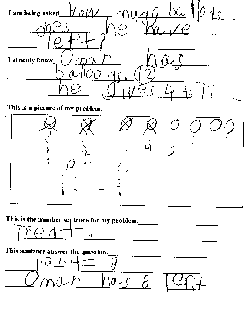Tamora Schoeneberg
Teaching Portfolio
Teaching
"The mediocre teacher tells, the good teacher explains,
the superior teacher demonstrates, the great teacher inspires."
- William Arthur Ward
Tamora Schoeneberg
In the summer of the second year of my teacher education program I was
ready to begin my final student teaching experience. I was placed in a
diverse school where I felt that I could learn and develop my skills as
a teacher in a placement that I thought was just right. The school decided
not to take student teachers in order to revamp their program, and I was
left without a placement. I found myself assigned to a place that I knew
little about, in a classroom where I was to co-teach with another student
teacher and two cooperating teachers whom I had never met. We were assigned
to work together teaching 46 first and second graders, most of whom were
ESL, some of whom had IEP's, and all but one who were minority students.
I didn't know it at first, but this was the richest educational environment
I could have asked for.

In this setting, I was given the opportunity to witness and participate
in how to educate children using collaboration to teach beyond what one
person could ever do alone. Initially, I watched and listened to my two
cooperating teachers as they planned their year, and then their week's
and day's lessons. They worked together to organize their lessons addressing
all of their students' needs, each teacher adding to the other's ideas
that would support certain students or goals. Other teachers and administrators
were brought into the planning at times to address issues where my cooperating
teachers needed added input or support, or to share content to more holistically
reach the students. This was the setting where I was privileged to learn
and to practice my craft.
Despite our different abilities and teaching styles, when it was our turn to take over the planning and teaching of the classroom of 46 students, my co-student teacher and I were able to continue the collaborative success of our mentors. We had a schedule to follow; we mapped out our weeks together so that we had a skeleton to use as a guide with which to plan our individual and collaborative lessons. We came together each day to discuss our plans and to share ideas. When we planned lessons that we co-taught, we worked together to develop the instruction and separate areas where we would each need to research or develop. We had different strengths and shared them throughout our experience, asking questions and providing ideas and assistance where needed. We discussed our individual students frequently, helping each other to find alternative methods of instruction when we found areas that needed support.
Throughout this experience, I worked with other teachers and administrators in the school to find resources, and to get suggestions for helping some of my students. In teaching my second grade reading group, I worked with the resource room student teacher to find ideas to expand and assess fluency better. I worked with the librarian to find books that would appeal to my students' backgrounds more relevantly than traditional Euro-American books. I consulted frequently with the Intervention Specialist to ensure that the behavior management strategies that I was using would be positive and fulfill the needs for several students in the classroom. I also consulted throughout my placement with my cooperating teachers to devise lessons that taught the skills, were relevant to and met the needs of the diverse learners with whom I was working.
With such collaborative support, the biggest challenge in my student teaching was how to support the needs of one particular student who was not progressing with my math instruction. In analyzing her work and participation, I found that she was well below the first grade level, and well below the level of all of the other students in the class ( Link to student work comparison). When it came right down to it, the issue I had was differentiation of instruction. I thought I was differentiating instruction the way I had learned in my University training; group discussion included questions and concepts aimed at many levels, allowing all of the students to successfully participate and contribute, basic math practice was on an individual progression, from adding 0 to 6 to subtracting numbers to 16. Students graphed their own progress, receiving lots of positive reinforcement and scaffolding. I even set up a computer math station where students could practice their skills during choice time, and those who mastered their basic skills could go further on the computer. Students shared their strategies, allowing those who understood concepts to demonstrate possibilities to their peers. We worked on TERC's Survey Questions and Secret Rules, and later Quilt Squares and Block Towns. I each Unit, I paired students heterogeneously, helping the stronger math learners and the less abled math learners to work together and support each others' abilities. I tried hard to make the lessons engaging and relevant. I broke down the work for some of the students so that it wasn't overwhelming. Despite my greatest efforts, this student still did not get it. No matter what I did, she struggled to understand each lesson and skill on which we worked. Over time, I found that she was drafting off the other students to get correct answers here and there. I worked with her individually when I could and found that she had difficulty understanding one to one correspondence and could add inconsistently up to the number 2.
I struggled to find a way to help this student while still teaching the other students in my class. I realized that I needed other ideas to solve this problem, and I sought help from others. I worked with my cooperating teacher to devise ways to teach this student better. We contacted her parents, had a meeting analyzing her work, and suggested that she may need more support than we could provide in the general education classroom. The parents wanted her to stay in the classroom, and so we were required to try different strategies in order to help this student to learn.To get more ideas, I met with my peers in a University Critical Friends Group (CFG), showing student work and discussing possible ways to reach this student using the Tuning Protocol. This collaborative meeting gave me more ideas to try in order to teach this student. Suggestions included enlisting an Instructional Assistant to give her the one-on one support that she seemed to need, using kindergarten curriculum to allow her to establish the underlying skills that she needed to build upon, and using games that she showed a liking for to engage her more deeply into learning. These suggestions aided my teaching, and I found the peer collaboration invaluable.
My cooperating teacher and I worked together to create lessons that addressed this students needs more fully. We put together packets for this student to practice needed skills, and we provided her parents with instructions and materials to work with her at home on building her skills. Through collaboration, this student is being provided with educational support that one teacher alone could not provide, and I believe strongly that it is our responsibility as educators to work with all resources that we can find to give our students what they require to learn.
 -
- -
- -
-